What is ChatGPT? Learn the Basics in Just 3 Minutes

What is ChatGPT?
If you’ve searched for this on Google, you’re probably wondering: “Can it really write like a human? Is it secure? What exactly can I use it for?” You’re not alone.
ChatGPT is a powerful AI that’s already changing the way people write, create, and work online. But we know it can feel a bit overwhelming at first. That’s why our ChatGPT series is here—to break it all down. In this guide, we’ll explore how it works, its latest features, and how to use it safely. Let’s dive in!
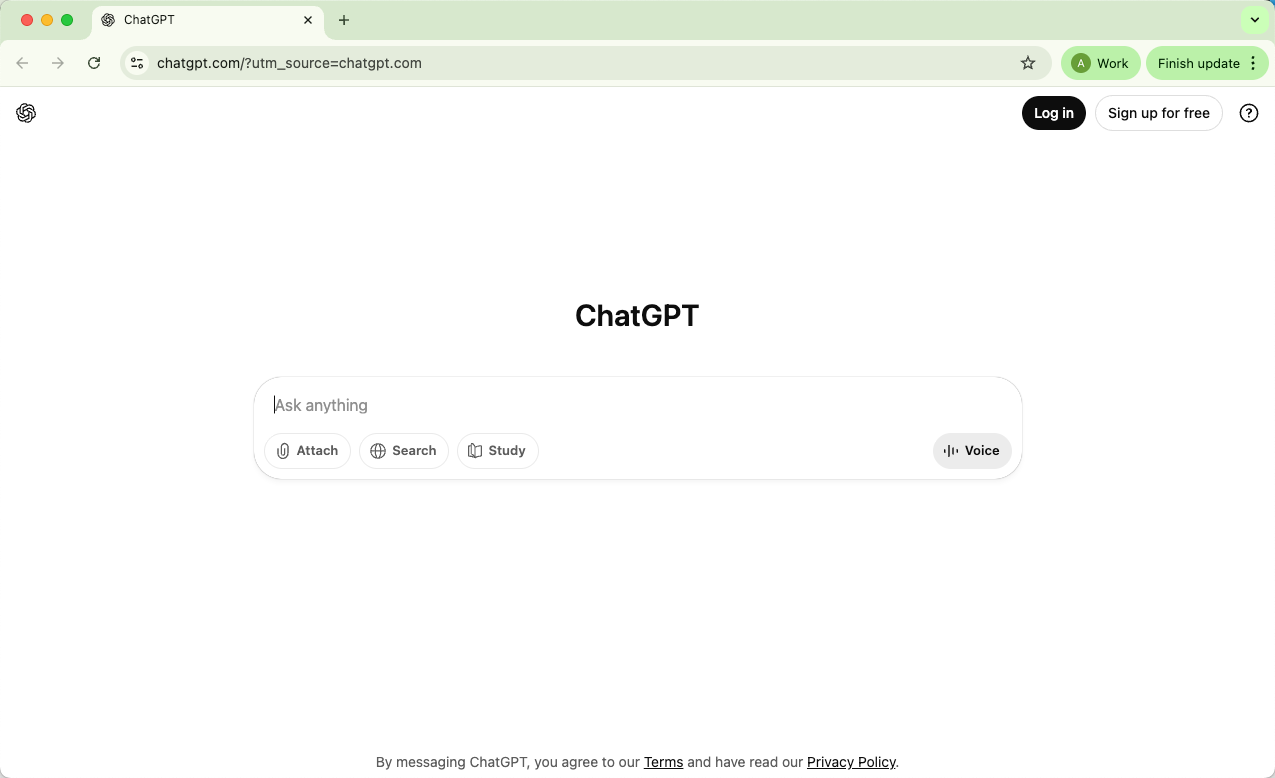
What is ChatGPT?
ChatGPT is an AI Chatbot that can understand and generate human-like text. Think of it as a supercharged virtual assistant that can answer questions, draft emails, help with writing, explain concepts, or just chat. It’s designed to make interacting with a computer feel more like talking to a person.
The “GPT” in ChatGPT stands for what? The Generative Pre-trained Transformer. Breaking that down:
Generative means it can create text, not just analyze it.
Pre-trained means it has already learned from a huge amount of text from the internet, books, and articles before you even interact with it.
Transformer is the underlying technology—a type of AI architecture that’s particularly good at understanding the context and meaning of words in a sentence.
ChatGPT was developed by OpenAI, a research company focused on building advanced artificial intelligence in a safe and practical way. The first version of GPT appeared in 2018, and OpenAI has continued improving it. ChatGPT itself launched in late 2022 and quickly became widely popular because it’s surprisingly good at sounding like a human.
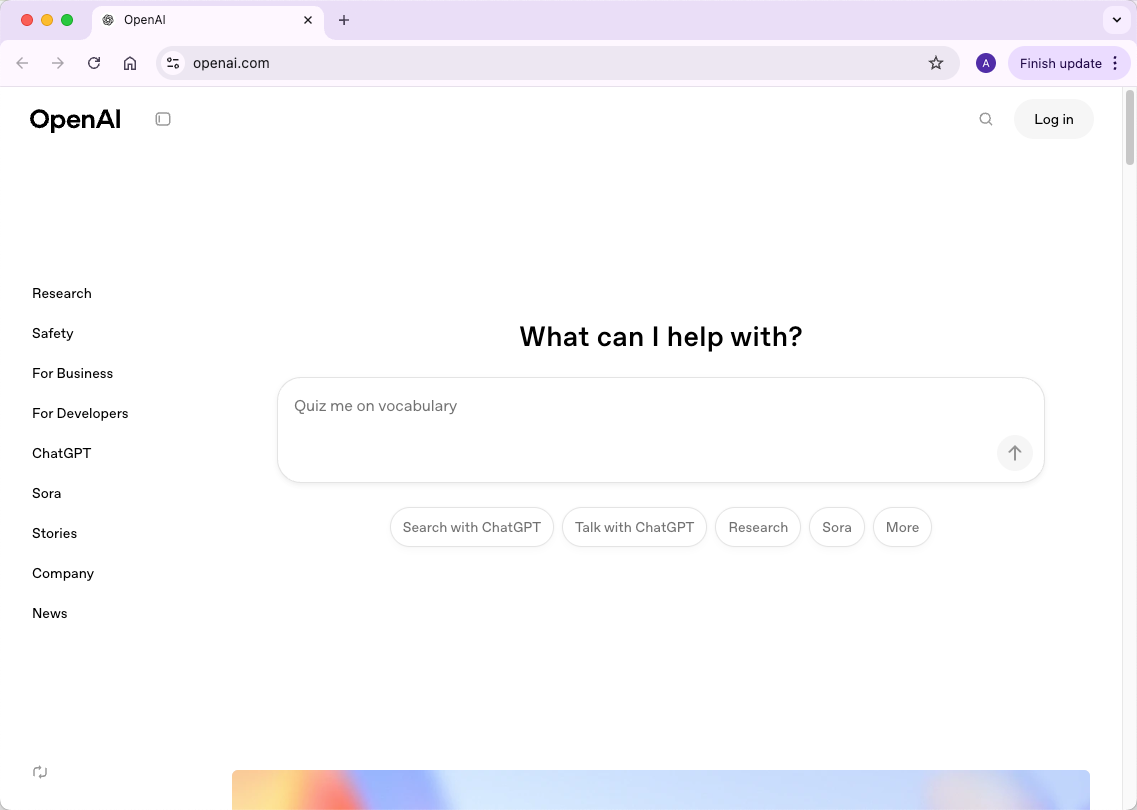
In short, ChatGPT is a powerful AI generator built on advanced machine learning techniques, designed to make computers communicate more naturally with people. And it’s not standing still—OpenAI continues to roll out new features and improvements, pushing the boundaries of what this AI can do.
How Does ChatGPT Work?
ChatGPT can feel like magic: you type a question or prompt, and it replies with coherent, human-like text. But underneath the surface, there’s a complex system at work. Let’s break it down step by step so you can see exactly how it works—without getting lost in jargon.
1. The Brain Behind ChatGPT: GPT Architecture
At the core of ChatGPT is something called a Generative Pre-trained Transformer, or GPT for short. Think of it as the brain of the AI. This brain is a transformer neural network, which is really good at understanding sequences—like how words follow each other in a sentence.
Why does that matter? Because when ChatGPT generates text, it predicts the next word in a sentence based on the words that came before. This ability to “see context” is what allows it to write essays, answer questions, and hold conversations that feel natural.
2. How ChatGPT Produces Text
Now that we know its brain is a transformer, how does it actually turn a prompt into a response? Here’s the simplified process:
It reads your input to understand what you’re asking.
It predicts the most likely next word using patterns it learned during training.
It repeats this prediction word by word until it has a complete answer.
This is why ChatGPT sometimes makes confident mistakes: it’s not “thinking” or checking facts, it's following patterns learned from data to generate plausible text.
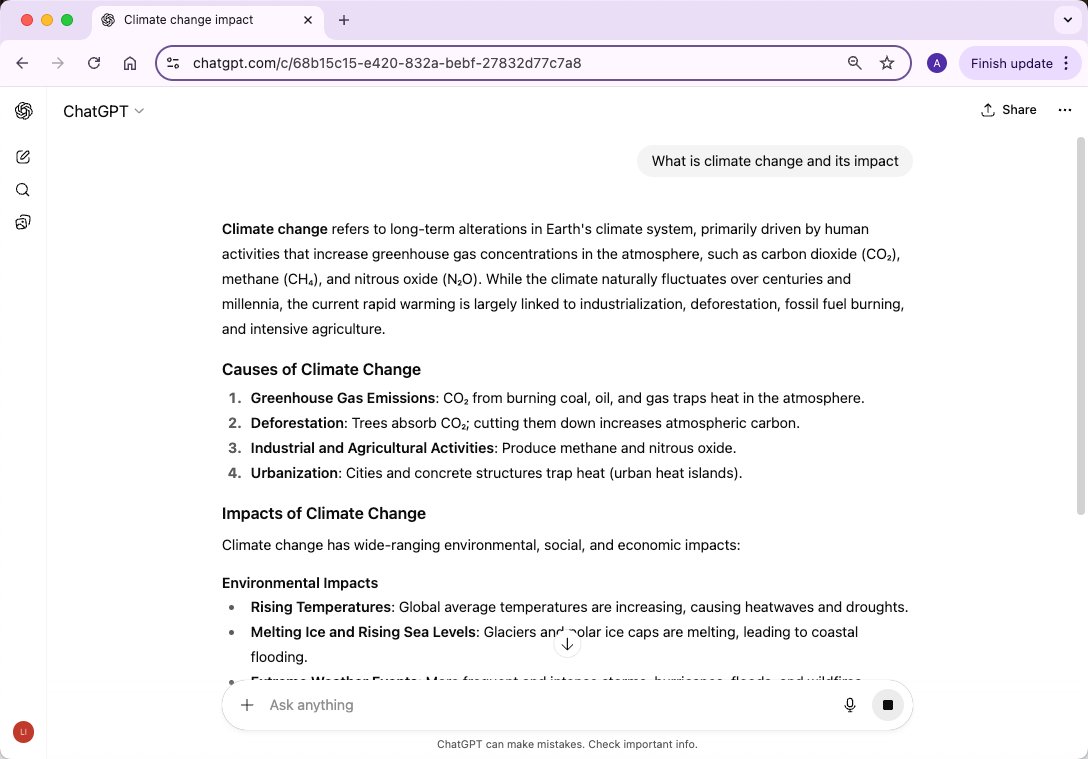
3. How ChatGPT Learned to Do This: Training
Before ChatGPT could respond to you, it had to learn a language. This happens in three main steps:
Pre-training
ChatGPT starts by learning from a vast amount of text data—think books, websites, and other publicly available written material. This phase teaches the model grammar, facts, reasoning patterns, and how words relate to each other. The model doesn’t memorize this data; instead, it adjusts internal parameters (numbers that represent learned patterns) to predict the next word in a sentence. Over time, it becomes better at understanding context and generating coherent text.
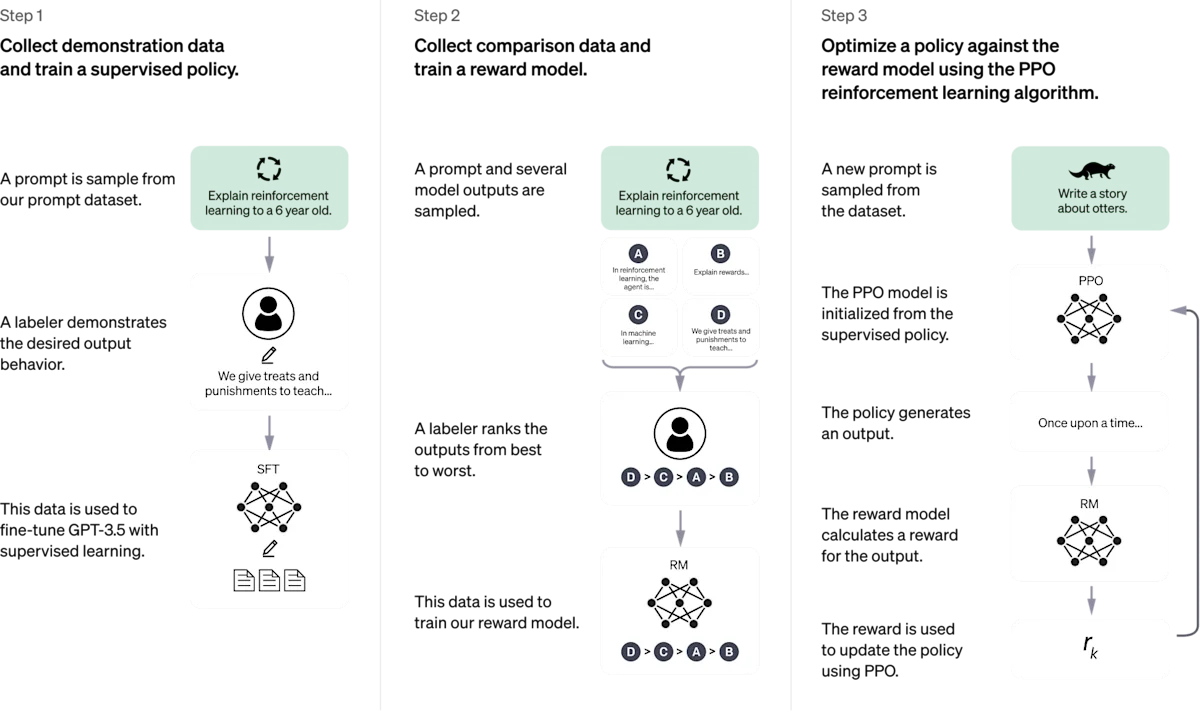
Fine-tuning with Human Feedback
Next, ChatGPT is refined using Reinforcement Learning from Human Feedback (RLHF):
Human trainers simulate conversations and show the AI examples of good responses.
They rank multiple possible outputs so the AI knows which ones are better.
The AI adjusts itself to favor higher-quality, more accurate answers.
This step is why ChatGPT can follow instructions, give detailed explanations, and even admit mistakes.
Continuous Improvement
Even after its release, ChatGPT keeps improving. User feedback—through upvotes, downvotes, and written comments—helps OpenAI identify areas where the model can perform better. This ongoing learning process allows ChatGPT to become more accurate, reliable, and responsive over time, adapting to new information and user needs.
So, step by step:
ChatGPT reads your prompt.
Its transformer brain predicts the next word in sequence.
Pre-training gives it a broad understanding of language.
Fine-tuning with human feedback improves relevance and safety.
Continuous updates make it more reliable over time.
All of these layers combine to make ChatGPT feel incredibly human-like—even though at its core, it’s fundamentally a text prediction engine, not a thinking or conscious entity.
And as it continues to evolve, OpenAI has introduced several recent developments and new features that push ChatGPT beyond its original capabilities, making it more versatile, powerful, and interactive than ever before.
Recent Developments and New Features in ChatGPT (August 2025)
1. GPT-5: A Leap Forward in AI Capabilities
OpenAI's GPT-5, released in August 2025, represents a significant advancement in AI technology. This model excels in complex reasoning tasks, such as generating and debugging intricate code, and offers improved design sensibilities, including better handling of typography and layout in web development.
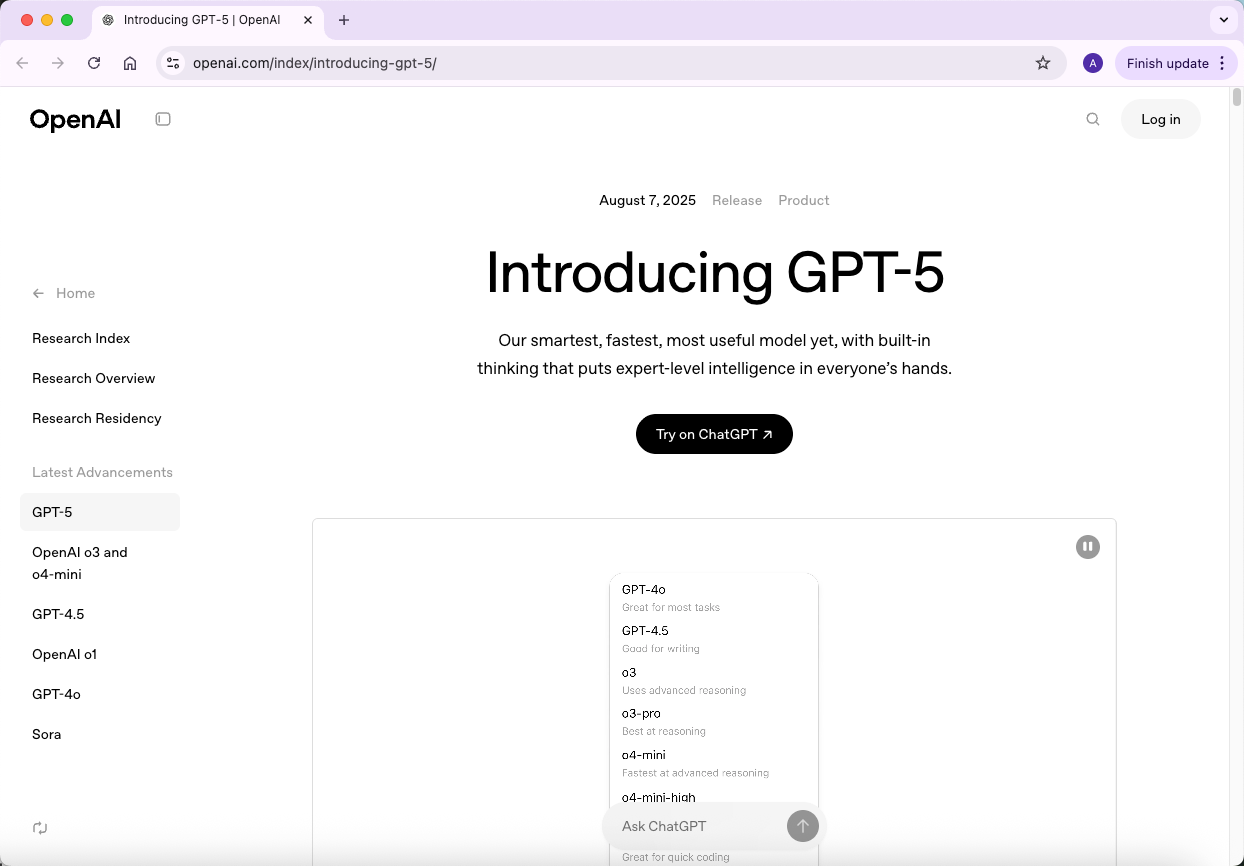
2. Deep Research: Autonomous Web Browsing for In-Depth Analysis
The Deep Research feature enables ChatGPT to autonomously browse the web for 5 to 30 minutes, compiling cited reports on user-specified topics. This tool is particularly useful for tasks requiring expert-level analysis, such as academic research or comprehensive market studies.
3. Agent Mode: Task Automation with AI
Agent Mode allows ChatGPT to proactively choose from a toolbox of skills to complete tasks autonomously. This feature is designed to handle complex tasks from start to finish, such as managing projects or conducting detailed analyses, without constant user input.
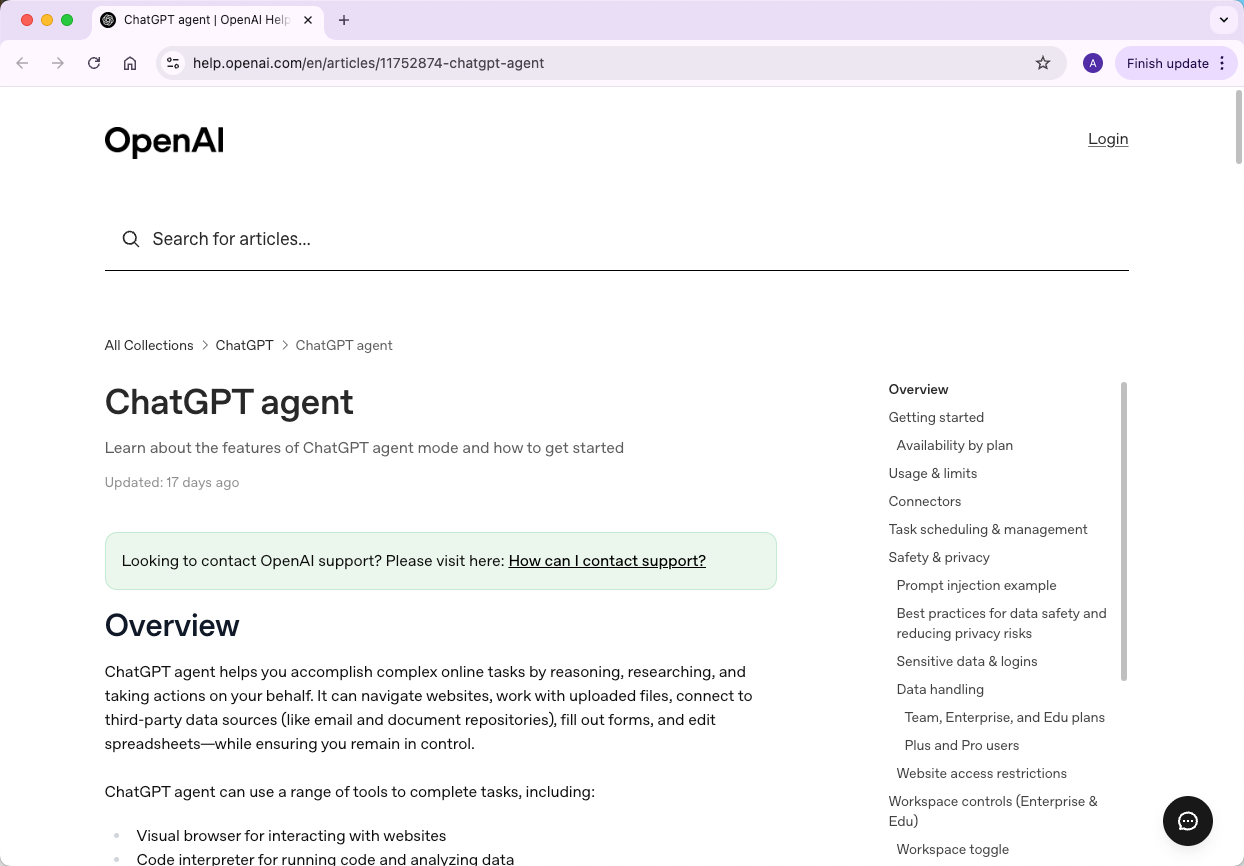
4. Parental Controls and Enhanced Safety Features
In response to concerns about AI's role in mental health, OpenAI is introducing parental controls and improved safety mechanisms. These updates aim to better support users exhibiting signs of mental distress and provide guardians with tools to monitor and manage their children's interactions with ChatGPT.
5. Voice Mode: Natural Conversational Interaction
Voice Mode enables users to engage in real-time, natural conversations with ChatGPT. This feature is particularly beneficial for multitasking scenarios, such as driving or cooking, where typing is impractical.
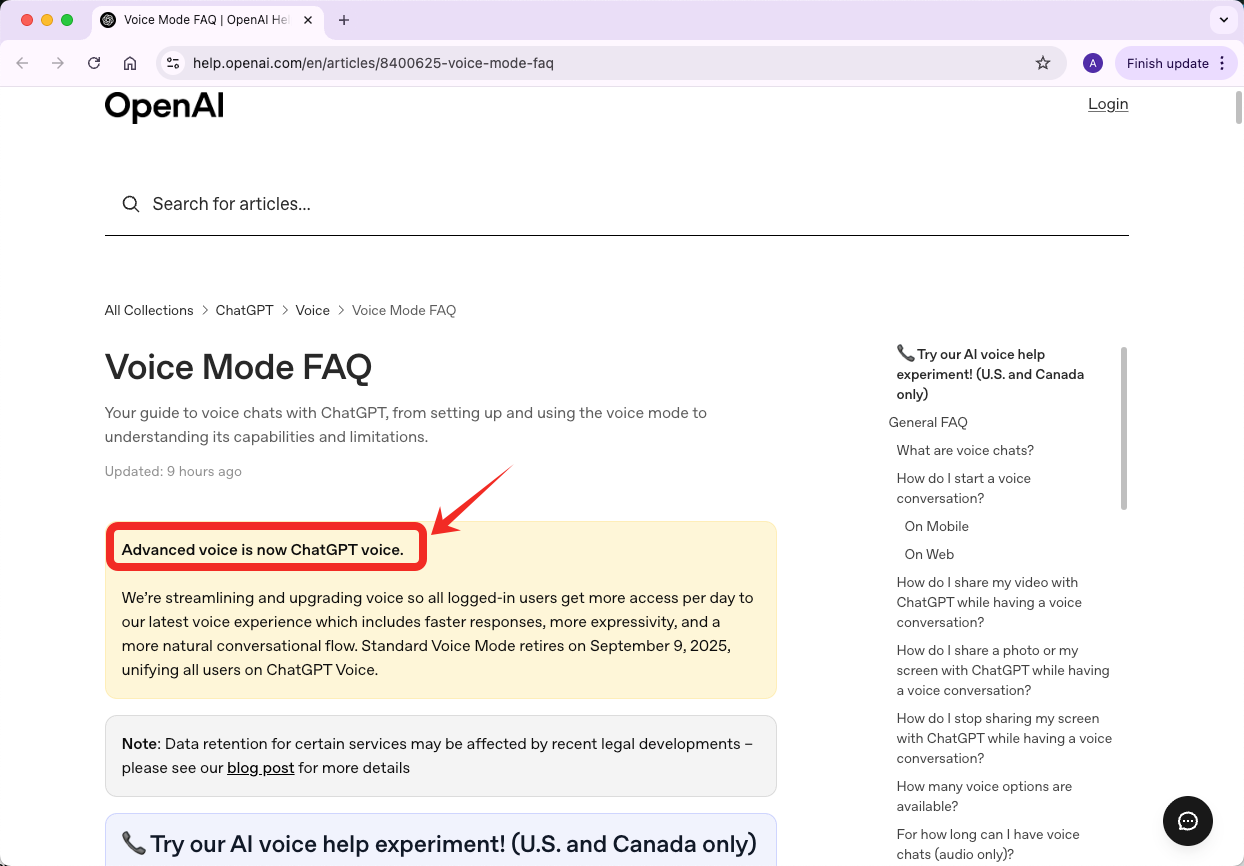
Different Models for Different Functions
By now, you understand that ChatGPT predicts text using patterns it learned during training. But here’s an important point: not all ChatGPT models are created equal. OpenAI offers different models optimized for different tasks, and knowing the differences helps you get better results.
Think of it like this: some models are fast and efficient, some are more thoughtful and nuanced, and others are specialized for advanced reasoning. Let’s walk through them.
Model | Intro | Best for |
GPT-4o | A versatile, all-around model balancing speed and capability. | Everyday tasks like writing, summarizing, translating, and analyzing images. |
GPT-4o Mini | Fast and efficient version of GPT-4o. | Quick reasoning tasks like coding help, math problems, and data analysis. |
GPT-4.5 | More thoughtful and nuanced model for human-like conversations. | Tasks requiring emotional intelligence or sensitive phrasing, such as workplace communication. |
o3 Series | Advanced reasoning model for complex analytical work. | Multi-step coding, math, scientific research, and strategic planning. |
GPT-5 | Unified and adaptive model capable of handling diverse tasks. | A wide range of tasks, from writing and coding to multimedia and deep analysis. |
How to Access ChatGPT?
So now that you understand what ChatGPT is and how it works, the next question is: how do you actually use it? The good news is, it’s more accessible than most people think. Let’s break it down step by step.
1. ChatGPT on the Web
The simplest way to access ChatGPT is through its official website: chat.openai.com. You just need a web browser and an internet connection.
Sign up or log in: You’ll need an OpenAI account. You can sign up with an email address, or use single sign-on options like Google or Microsoft.
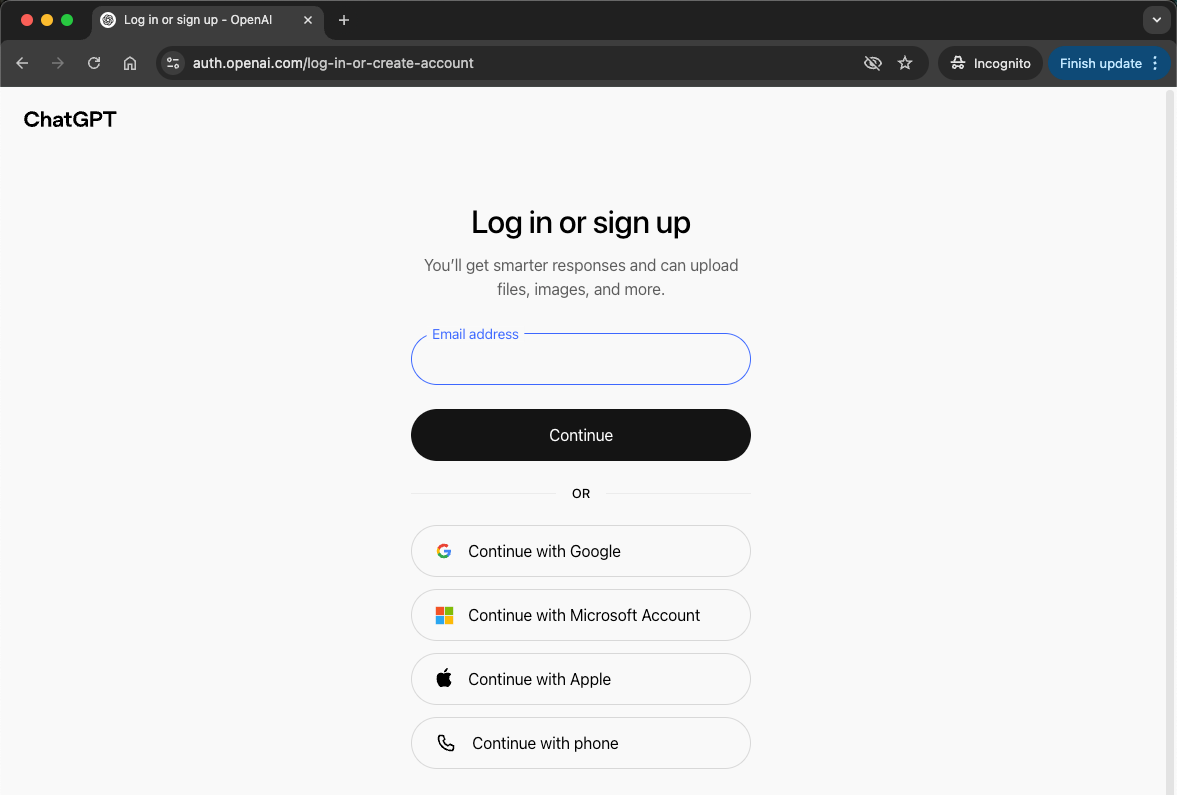
Start chatting: Once logged in, you can type prompts or questions in the chat box and get responses immediately.
This web interface works on both desktop and mobile browsers, so you don’t need any special software.
2. Free vs. Paid Versions
OpenAI offers both free and paid access to ChatGPT, each with different features:
Free Tier: Provides access to GPT-5 with standard functionality. Responses are generally reliable, though they may be slower during peak usage periods.
ChatGPT Plus ($20/month as of 2025): Unlocks the full power of GPT-5 with advanced capabilities, including:
Expanded messaging and file uploads
Enhanced deep research and “agent mode” for task automation
Support for Projects and custom GPTs
Sora video generation, etc.
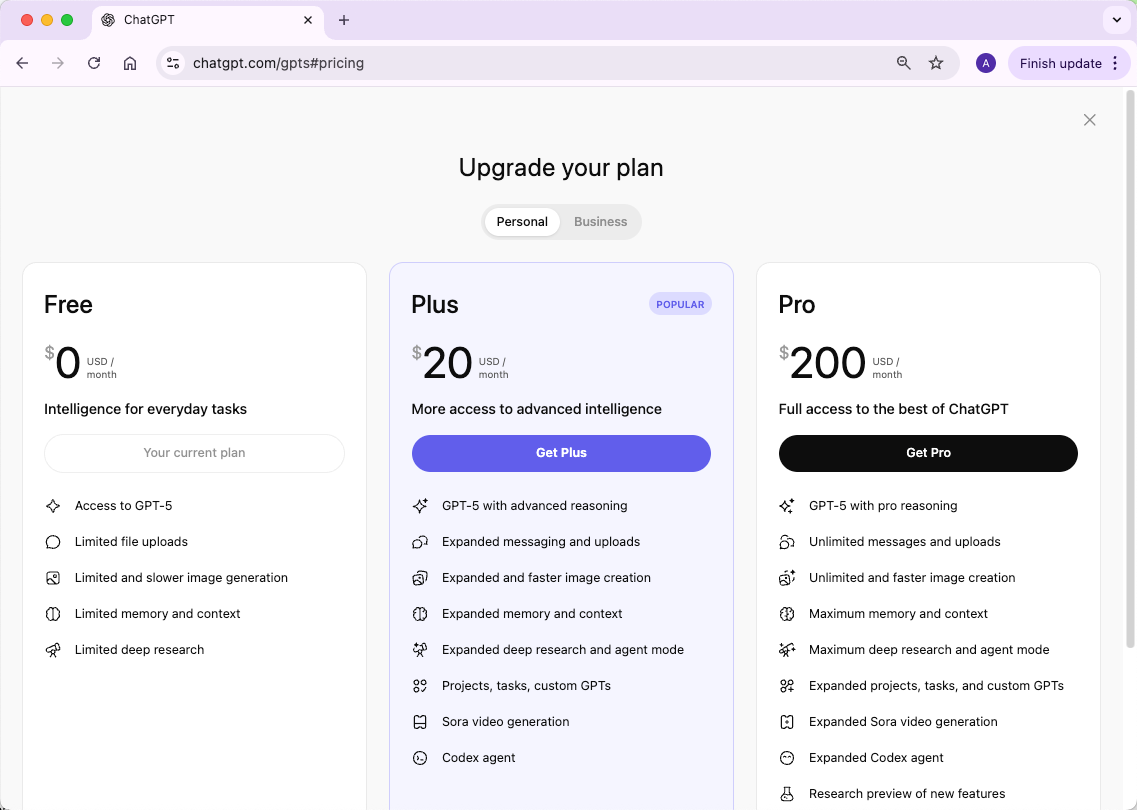
3. Mobile Apps
OpenAI also provides official ChatGPT apps for iOS and Android:
Available in the Apple App Store and Google Play Store.
The mobile experience is very similar to the web version, with the added convenience of notifications and on-the-go access.
4. Third-Party Integrations
Besides the official channels, ChatGPT is integrated into other platforms:
Microsoft Products: ChatGPT powers tools like Word and Excel via “Copilot.”
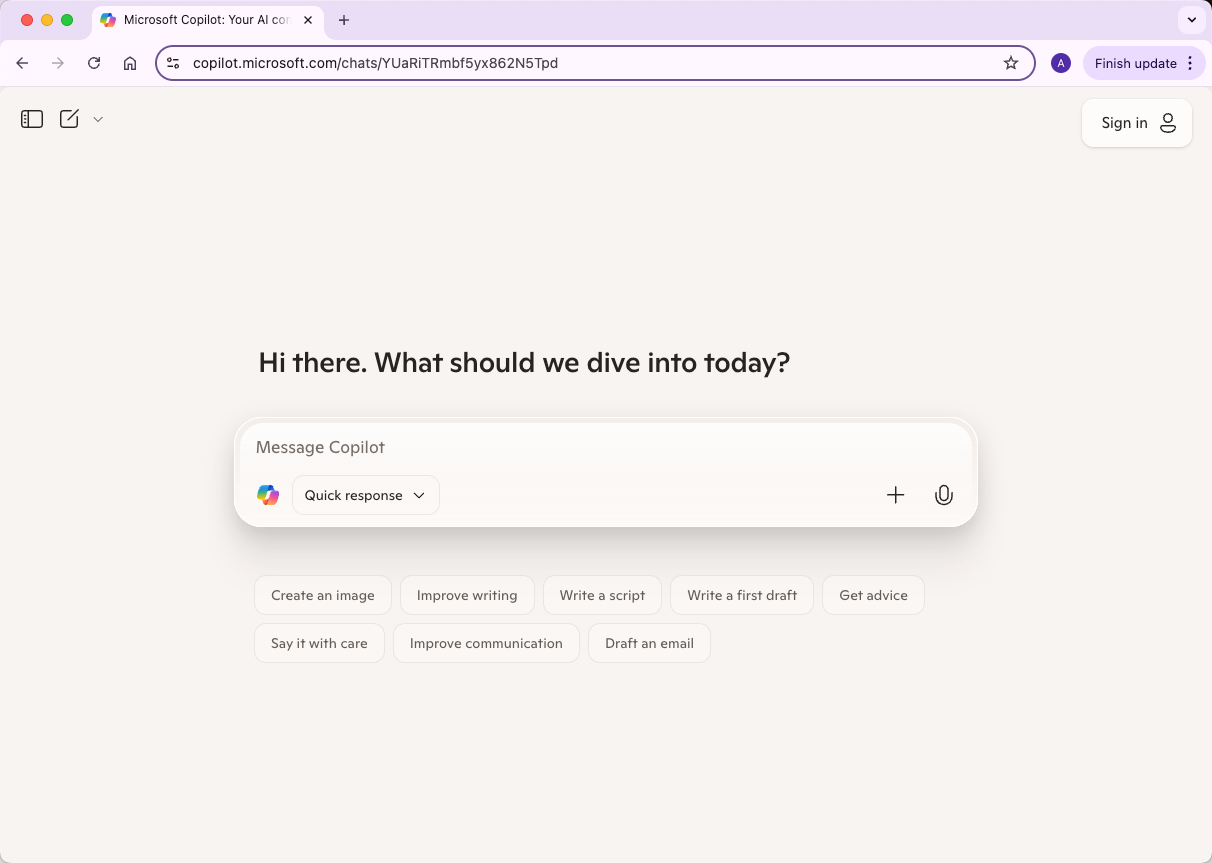
APIs: Developers can use the OpenAI API to integrate ChatGPT into their apps, websites, or services.
Plugins: Some versions of ChatGPT, especially GPT-4, support plugins that extend capabilities, like accessing live information from the web or interacting with external services.
What Can You Do With ChatGPT?
Now that you know what ChatGPT is and how to access it, the next question is: what can you actually do with it? The short answer: a lot. ChatGPT isn’t just a chatbot for casual conversation—it’s a versatile tool for work, study, and creativity. Let’s explore the main ways you can use it.
1. Using ChatGPT in Your Work
ChatGPT can save time and make your work more efficient in many ways:
Writing and Editing: Draft emails, reports, blog posts, or social media content. ChatGPT can also help polish your writing, improving grammar, tone, and clarity.
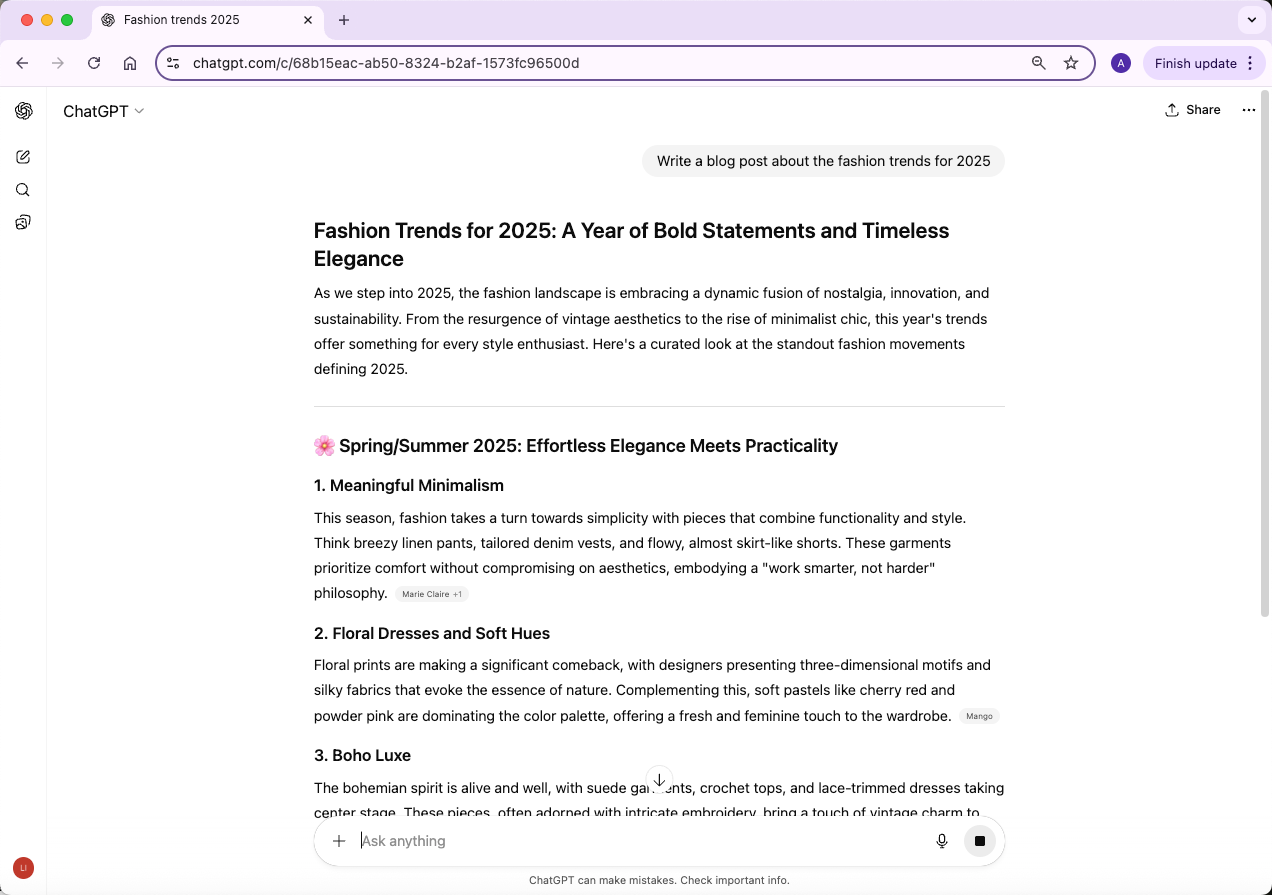
Research and Summaries: Ask ChatGPT to summarize articles, documents, or long reports. It can condense complex information into something easier to digest.
Programming Help: Generate code snippets, troubleshoot errors, or explain coding concepts in plain language.
Brainstorming Ideas: Whether it’s a new marketing strategy, product ideas, or creative content, ChatGPT can offer suggestions and alternatives.
Essentially, it acts like a versatile assistant that can handle repetitive or time-consuming tasks, giving you more time to focus on high-level thinking.
2. Key Features of ChatGPT
Some of the standout features that make ChatGPT so useful include:
Conversational Memory: ChatGPT can remember the context of a conversation during your session, allowing for follow-up questions and deeper discussions.
Customizable Tone and Style: You can ask it to write formally, casually, humorously, or even in a specific professional style.
Multilingual Support: ChatGPT understands and can generate text in multiple languages.
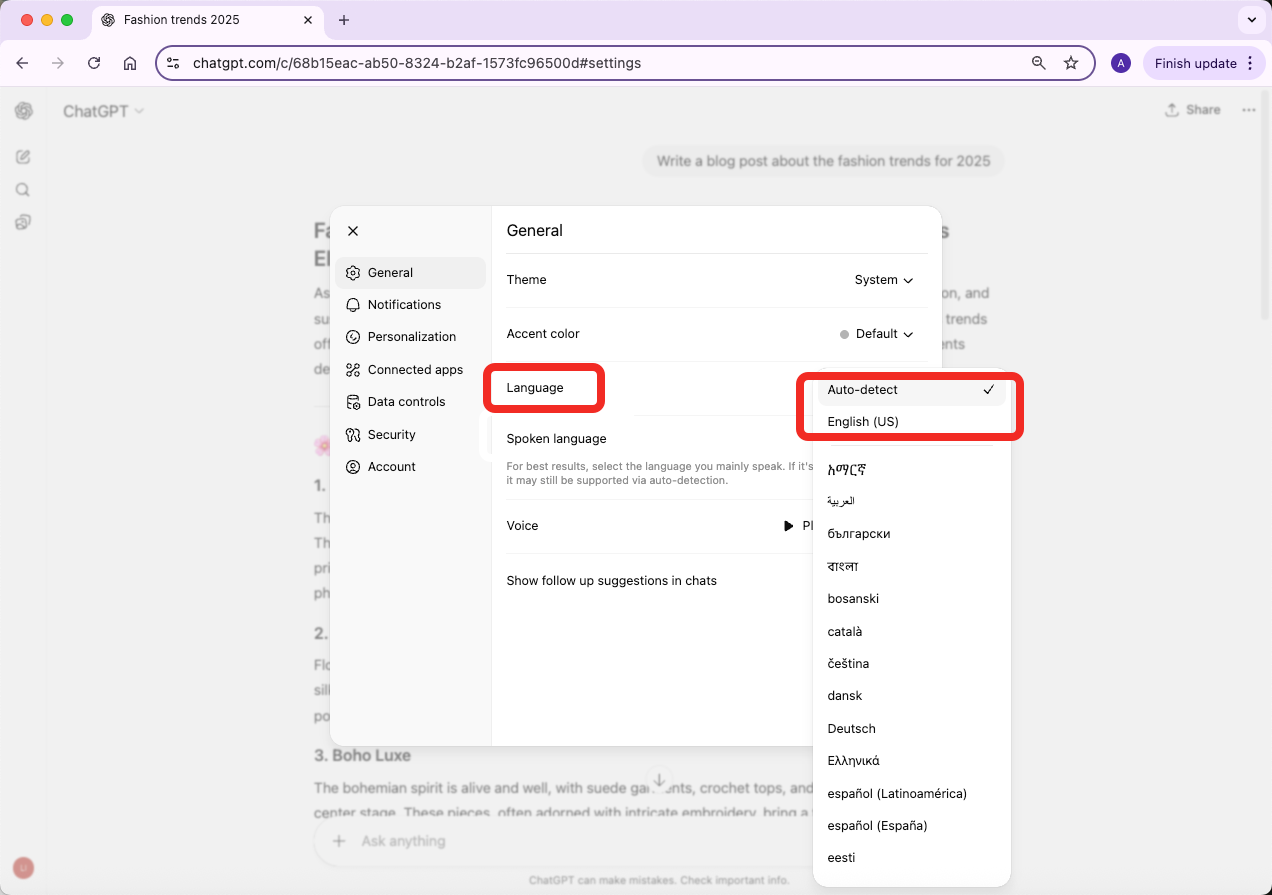
Task-Specific Instructions: You can ask ChatGPT to draft lists, create tables, or summarize text into bullet points—tailoring it to your workflow.
Plug-ins and Extensions (GPT-4 and Plus tiers): Advanced users can connect ChatGPT to external tools, use it to analyze data, or even interact with websites.
3. Everyday Practical Uses
Beyond work, ChatGPT can also be surprisingly helpful in daily life:
Learning and Study Help: Explain complex concepts, solve problems, or generate practice questions.
Creative Writing: Brainstorm story ideas, draft poems, or even generate dialogue for scripts.
Personal Productivity: Create to-do lists, plan trips, or draft reminders.
Casual Conversations: Sometimes you just want to chat or explore ideas—it’s surprisingly good at that too.
Limitations of ChatGPT
ChatGPT is a powerful AI, but it’s not perfect. Understanding its limitations helps you use it more effectively and avoid surprises. Let’s walk through the main issues and what they mean in practice.
1. Plausible-Sounding but Sometimes Wrong
One of the most important things to know is that ChatGPT can produce answers that sound convincing but are incorrect or nonsensical.
Why it happens: During training, the AI learns from patterns in text rather than absolute facts. There’s no single “source of truth,” so the model can confidently generate content that is wrong.
Effect on you: You might get a response that seems correct at first glance, but you should always double-check critical information.
OpenAI explains: “Fixing this issue is challenging… the ideal answer depends on what the model knows rather than what the human demonstrator knows.”
2. Sensitivity to How You Ask
ChatGPT is very sensitive to phrasing. A small change in how you ask a question can lead to completely different answers.
Why it happens: The model predicts responses based on patterns it learned, so different wording can trigger different predictions.
Effect on you: If the first answer isn’t quite right, rephrasing your prompt can often produce a better result.
3. Repetitive or Overly Wordy Responses
Sometimes ChatGPT is too verbose or repetitive, often reminding you that it’s “a language model trained by OpenAI.”
Why it happens: Trainers prefer longer, comprehensive answers, which biases the model toward verbosity.
Effect on you: Responses can feel formulaic or unnecessarily long. You may need to ask for a shorter summary or more concise version.
4. Handling Ambiguity
When you give an unclear or ambiguous prompt, ChatGPT usually guesses what you mean instead of asking for clarification.
Effect on you: The response may miss the point or go in a direction you didn’t intend. Being clear and specific in your prompts can reduce this issue.
5. Biases and Unsafe Content
Because ChatGPT learned from large amounts of internet text, it can occasionally generate biased, offensive, or unsafe responses.
How it’s managed: OpenAI uses tools like the Moderation API to block harmful content, but it’s not perfect.
Effect on you: Be cautious when using the AI for sensitive topics, and don’t rely on it for moral or ethical guidance.
6. Outdated Knowledge
ChatGPT doesn’t know everything—its knowledge is mostly limited to what it learned during training (up to 2021 for some models, early 2023 for others).
Effect on you: It may provide outdated information, especially in fast-changing fields like news, technology, or cybersecurity. Always double-check facts for current accuracy.
Now that we’ve explored how ChatGPT works, its strengths, and its limitations, it’s important to take a moment and talk about how to use it safely. Like any powerful tool, ChatGPT can be incredibly helpful—but only if you know the boundaries and exercise a bit of caution. Let’s dive into what you should notice when using ChatGPT.
Alright, so you’ve seen how powerful ChatGPT can be, but here’s the reality check: with great AI power comes great responsibility. Using it wisely isn’t just about asking clever questions—it’s also about protecting yourself, your data, and your work. Let’s talk about the precautions you should take when using ChatGPT.
What Precautions Should Be Taken When Using ChatGPT?
Think of ChatGPT like a helpful but very public-facing assistant. It’s amazing at generating text, solving problems, and even brainstorming ideas—but it’s not a private vault. Here are the key precautions to keep in mind.
1. Protect Your Personal Information
Never share personally identifiable information (PII) such as your full name, home address, phone number, or government ID. Even though OpenAI uses user interactions to improve the model, sensitive personal details should remain private. Treat the AI as if it’s a public forum—you wouldn’t post these details there, so don’t post them here.
2. Keep Financial and Banking Details Private
ChatGPT is not a secure financial tool. Avoid sharing credit card numbers, bank account information, or any financial transaction data. Doing so could put your money at risk, and the AI cannot act as a trusted financial advisor.
3. Guard Your Passwords and Login Credentials
Passwords, PINs, and login information should never be shared with ChatGPT. Even if the AI seems helpful, it cannot securely store or manage sensitive login details, and sharing them could compromise your accounts.
4. Don’t Share Private or Confidential Information
Avoid sending confidential work files, medical records, or personal secrets. ChatGPT’s responses are generated from patterns in text, and sensitive content could be inadvertently exposed or remembered in ways you don’t intend.
5. Protect Proprietary or Intellectual Property
If you’re working on proprietary projects, trade secrets, or copyrighted material, don’t submit them to ChatGPT. The AI generates content based on what it has learned from massive datasets, and sharing proprietary information could risk exposure or misuse.
Legal and Ethical Awareness
Finally, remember that ChatGPT exists in a complex legal and ethical space. Issues like copyright, data privacy, and AI accountability are still evolving. Being cautious about what you share and how you use AI-generated content helps you stay on the safe side.
ChatGPT FAQ
1. Why does ChatGPT seem so real and lifelike?
ChatGPT was trained on huge amounts of text from the internet, including human conversations. This is why its responses often feel natural and human-like. Remember: it doesn’t actually understand the content, so some answers can be wrong, misleading, or nonsensical.
2. Can ChatGPT be “jailbroken”?
Attempts to bypass ChatGPT’s safety filters—sometimes called “jailbreaking”—exist, but they’re risky. OpenAI actively updates the system to prevent harmful or unsafe outputs. Stick to safe use and avoid prompts that try to trick the AI into unsafe behavior.
3. Can I trust that ChatGPT is telling the truth?
Not completely. ChatGPT isn’t connected to the live internet and has limited knowledge after 2021 (or early 2023 for newer models). It can confidently provide wrong or outdated information. Tip: always verify critical facts and provide feedback if you spot inaccuracies using the “Thumbs Down” button.
4. Who can see my conversations?
OpenAI reviews conversations to improve the model and ensure safety. While they use this data to make the AI better, it’s not a private vault, so avoid sharing sensitive personal, financial, or proprietary information.
6. Are there alternatives to ChatGPT?
Yes. Other AI chat and language models include:
Claude by Anthropic
Bard by Google
Bing Chat by Microsoft
Open-source models like LLaMA or Mistral
Each has its own strengths and limitations, so you can explore different options depending on your needs.
Conclusion
Alrighty, we’ve covered a lot! From what ChatGPT is, how it works, the newest features, different models, and all the things you can do with it, to the limitations and precautions—you’re now ready to dive in like a pro.
Remember, it’s powerful, but not perfect, so use it smartly, double-check facts, and keep your info safe. Play around, experiment, and have fun—ChatGPT is here to make your digital life a whole lot easier! And don’t miss our ChatGPT Hub series for the latest updates and tips.
